Dive into the recycling debate around paper plates. Are they truly green or masking deeper environmental issues? Discover sustainable choices for your table.

In our journey towards a greener planet, every little choice counts.
You've probably noticed, like I have, how paper plates have soared in popularity among our eco-conscious peers.
Why? Because they seem like a guilt-free alternative to plastic.
In fact, the paper cups and paper plates market size in the US has reached $21.6 Billion in 2022.
But here's a question I've been mulling over: are paper plates recyclable?
As we both know, diving into the recyclability of everyday items is more than just a curiosity—it's essential in today's age of heightened environmental awareness.
Let's dive in and shed some light on this topic.
Can You Recycle Paper Plates and Cups?
The direct answer? Theoretically, you can recycle paper plates, but not not so much in reality. Paper plates and cups, despite seeming like perfect candidates for recycling, often end up in landfills.
The core problem? Contamination, mainly coming from food residue.
Remember the last time we had a pizza party and noticed the oily residue on the box? Similar issues arise with paper plates. Whether it's leftover food bits, grease, or wetness, these contaminants hinder the recycling process.
Now, diving deeper into the nitty-gritty, not all paper plates are created equal. Some paper plates are biodegradable, offering a ray of hope for our environment.
Yet, many have coatings—like wax or plastic—that make recycling even more challenging.
Because of these coatings, recycling paper plates becomes as complex as handling plastic paper recycling. And let's face it, only a handful of recycling facilities possess the necessary equipment to deal with this specialized task.
So, while clean paper plates might stand a slim chance, the majority of used plates, especially those with coatings, aren't as recyclable as we'd wish. Before you compost paper plates or think of recycling paper plates, it's crucial to know the type and its associated coating.
What Are Paper Plates Made Of?
If you've ever paused to wonder about the composition of that disposable plate you're holding, you're not alone.
At the core of our recycling journey lies a clear understanding of materials. Most paper plates begin their life as paper pulp, a mash of organic fibers that, when pressed and dried, form the familiar plate.
This simple paper pulp creation process means some paper plates are compostable. However, it's not always that straightforward.
The Paper Plate Manufacturing Process
The paper plate making process is a blend of mechanical operations and chemistry that transforms wood fibers or recycled fibers into the convenient and disposable paper plates we often use.
Let’s delve into the details of this process:
Sourcing Raw Materials
The primary raw material for most paper plates is wood pulp. This can be sourced from freshly cut trees or from recycled paper products.
For more eco-friendly alternatives, some manufacturers also use bagasse, which is the residue left after extracting juice from sugarcane.
Pulping Process
The wood chips or recycled paper are broken down into tiny fibers. This is achieved by mixing the wood chips with chemicals and water and then heating the mixture. This process is called ‘cooking.’
Once cooked, the mixture is cleaned to remove any contaminants and screened to remove larger particles.
The result is a slurry of wood fibers, called pulp.
Bleaching
To get the bright white color commonly associated with paper plates, the pulp may undergo a bleaching process.
However, some eco-conscious companies skip bleaching or use chlorine-free methods to keep the process more environmentally friendly.
Formation of Plates
The wet pulp is then placed onto forming machines. These machines use molds to shape the pulp into the design of the plate.
Excess water is drained, leaving a wet plate shape.
Drying
The wet plate forms are then passed through heated rollers or drying sections to evaporate the remaining water.
This results in the formation of solid paper plates.
Coating (if applicable)
Many paper plates receive a coating to make them more resistant to moisture and grease. This coating can be wax, plastic, or other materials.
The coating is either sprayed onto the plate or the plate is passed through a bath of the coating material.
Cutting and Shaping
After drying and coating, the plates may go through machines for further shaping, cutting, or designing.
Quality Control
Sample plates are regularly taken off the production line and tested for quality. This can include tests for strength, moisture resistance, and overall appearance.
Packaging
Once approved, the plates are counted, stacked, and packaged for distribution.
The paper plate making process has evolved over time with the introduction of more automated machinery and sustainable practices. The rise in environmental awareness has also prompted manufacturers to explore biodegradable and compostable alternatives to traditional paper plates.
The Difference Between Coated and Uncoated Plates
The story gets a tad complex when coatings enter the picture. While uncoated paper plates remain closer to their original, recyclable nature, many plates you come across in stores have a protective layer.
Why? To shield them from food waste, wetness, and grease.
These coatings can be wax, plastic, or other materials. Though they make the plate more resilient, they also make the recycling process trickier.
For instance, plastic plates, despite the name, are often just paper plates with a thin plastic coating. This plastic layer helps the plate resist moisture but poses a challenge during recycling.
While the paper plate involves organic materials, the plastic layer doesn't fit the typical mold. Not all facilities can accept paper plates with such coatings, classifying them as 'paper plates bad' for the environment compared to their uncoated counterparts.
In essence, understanding the difference between a coated disposable plate and an uncoated one can make all the difference when deciding their fate post-use.
Read More:
Environmental Impact of Paper Plate Waste
In today's world, convenience often comes with a hefty price tag — one we pay with the environment. Paper plates, a staple of quick clean-ups and picnics, add a surprising amount to our waste pile. It’s more than you might think!
Deforestation And Habitat Loss
Every paper plate starts with wood pulp, and that demand pressures forests around the globe. The World Counts estimates that deforestation could push about 28,000 species toward extinction in the next 25 years. While paper plates aren't the only culprits, they contribute to the timber demand.
Sure, some plates are made from recycled materials, but many still come from freshly cut trees. This not only leads to habitat destruction but also reduces carbon storage, impacting biodiversity.
Pollution and Greenhouse Gas Emissions
The paper plate journey doesn’t stop at deforestation. The manufacturing process involves harsh chemicals and bleaching, which pollute water sources.
Plus, the paper industry ranks among the top five greenhouse gas emitters in the industrial sector. Globally, it's responsible for 296 million tons of greenhouse gases annually. That’s a lot of pollution for a plate that's used once and tossed!
Recycling Challenges
Think you can recycle those greasy, food-smeared plates? Think again. Contaminated paper plates can't be easily recycled.
Food scraps and oily residues can ruin entire batches of recyclables, and worse, they can clog up machinery at recycling plants, causing expensive damage.
Read More:
Resource Intensity
Let’s talk about resource use. Unlike ceramic plates that last for years, paper plates are single-use items. Making them consumes water, energy, and raw materials, all for a brief moment of convenience. In contrast, ceramic plates, while requiring resources initially, offer a much longer lifespan, making them far more resource-efficient over time.
Switching from paper to reusable plates isn't just good for the planet; it's a small change with a big impact on reducing waste and saving trees.
The Recycling Process of Paper Plates
Recycling is an integral cog in the sustainability wheel, and paper plates, albeit a challenge, are not an exception. Let's unpack the journey a used paper plate embarks upon when tossed into a recycling bin, hoping for a second chance.
Step 1: Collection
Your paper plates, once thrown into the recycling bin, are collected by the local recycling team. They transport all recyclables, including your plates, to a centralized recycling facility.
Step 2: Sorting
Upon reaching the recycling facility, items get sorted. For paper items, the sorting is based on the quality and type of paper. Wax coated plates or those with a plastic lamination might be separated, given the different recycling techniques required.
Step 3: Cleaning
This step is crucial for plates due to potential food contamination. Plates are cleaned to remove any oil residue, food scraps, or any other contaminants that could hinder the recycling process.
Step 4: Pulping
Clean plates are then submerged in water and turned into a slurry, effectively transforming them back into tiny pulp fibers.
Step 5: De-inking
If the plates had any print, they undergo a de-inking process. It involves adding air bubbles to the pulp slurry, which causes ink particles to attach to them and float to the surface.
Step 6: Refining and Bleaching
The pulp is further refined, screened, and sometimes bleached to prepare it for its next life, be it as tissue boxes, new paper plates, or other paper products.
Step 7: Molding and Drying
The pulp is then spread on wire meshes, pressed to squeeze out water, and then dried. It's during this stage that the pulp is reshaped, molded, and dried into new paper products.
Are Paper Plates Biodegradable?
Absolutely, paper plates are fully biodegradable. This characteristic sets them apart in the wide landscape of disposable products and offers a silver lining in our pursuit of sustainable living.
When it comes to understanding how long it takes for these plates to break down, it's essential to consider the environment.
In a compost pile, rich in microbes and organic activity, paper plates can degrade in several weeks to a few months. But in landfills, where conditions are less conducive to decay, they might take a bit longer.
However, it's crucial to distinguish between paper plates biodegradable in nature and those treated with certain chemicals or plastic coatings, which can extend their decomposition timeline.
Plastic plates, with their lasting persistence, can linger in our environment for centuries. Comparatively, biodegradable materials like paper plates offer a more eco-friendly option. They don't just vanish; they return to the earth, enriching it rather than polluting.
For instance, when you compost a paper plate, it integrates into the compost bin's ecosystem, turning into nutrient-rich matter beneficial for plants. Opting for certified compostable plates ensures you're choosing products that meet specific standards for full decomposition in composting environments.
Are Paper Plates Compostable?
Certainly, many paper plates are compostable. However, the extent to which they decompose and become a part of the compost depends on their composition and how they're treated.
If you're keen on adding used paper plates to your compost pile or compost bin, start by ensuring they're free from plastic coating and heavy food residue. Clean paper plates, especially those without a glossy or waxy finish, are ideal. These uncoated paper plates break down more efficiently, their fiber bonds disintegrating to become part of the valuable nutrients in the compost.
However, remember that paper plates with a shiny or plastic coating aren't suitable for composting. The reason? This coating is often made of polylactic acid or other materials that don't decompose as easily in a natural environment.
Why Composting Paper Plates is a Good Idea
Adding paper plates to your compost is beneficial for a few reasons:
1. Sustainability: As the world moves towards eco-friendly alternatives, composting biodegradable products, including paper plates, ensures they return to the earth and enrich the soil.
2. Reduced Waste: When composted, paper plates don't end up in landfills. This decreases the volume of waste we produce, helping the environment.
3. Rich Compost: Paper decomposes into carbon-rich material, balancing out the nitrogen-rich food waste in compost, leading to a healthier compost mix.
While recycling is a viable option for many products, with paper plates, it's a different story. Plates contaminated with food waste can't be recycled due to the breakdown in fiber bonds caused by oils and residues.
Therefore, composting emerges as the most practical option for discarding used paper plates.
Frequently Asked Questions (FAQ)
No, Dixie ultra paper plates are coated, which makes them non-recyclable in most recycling facilities.
Plates made from 100% paper, without plastic or wax coatings, are typically compostable. Look for labels stating "certified compostable" or "100% biodegradable."
While paper plates decompose faster than plastic ones, they still contribute to waste. Opting for compostable or biodegradable plates is a better environmental choice.
Reusable plates made from materials like ceramic, glass, or stainless steel are the best alternatives in terms of reducing waste.
Compostable plates made from organic materials like palm leaves, bamboo, or certified compostable compounds are among the most environmentally friendly disposable options. However, for regular use, reusable plates remain the greenest choice.
Final Thoughts and Best Practices
So, are paper plates recyclable? Well, it's complicated. Some can be recycled, but many can't because of things like food scrapes or special coatings.
If you want to be eco-friendly, try composting. This means turning paper plates into earth-friendly compost instead of just throwing them away.
But remember, not all plates can be composted.
Using traditional plastic plates isn't great either. The best choice? Reusable plates. Plates like ceramic or glass ones can be used many times, which is good for the Earth.
In short, if you can, choose reusable plates over disposable ones. It's a simple change that helps our planet.

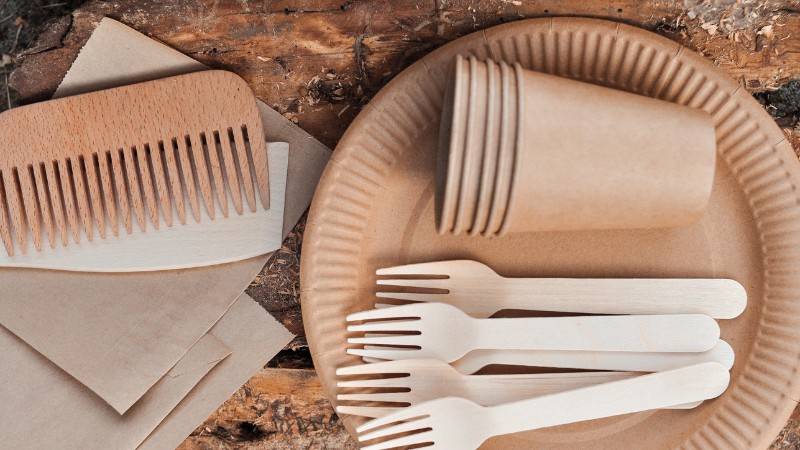
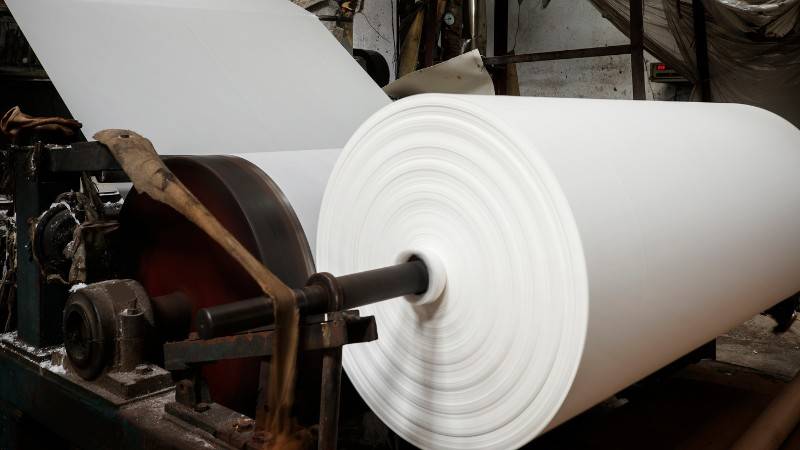

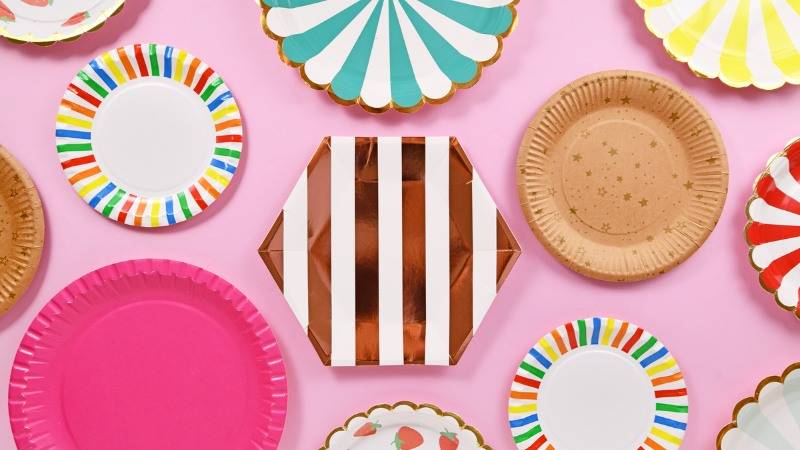
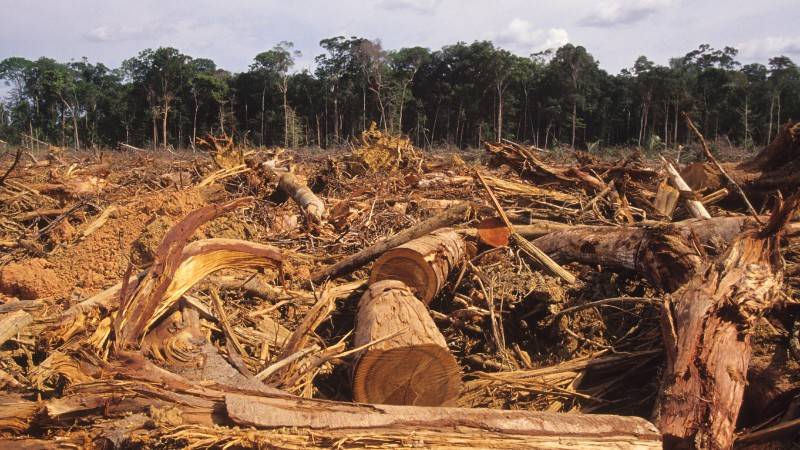
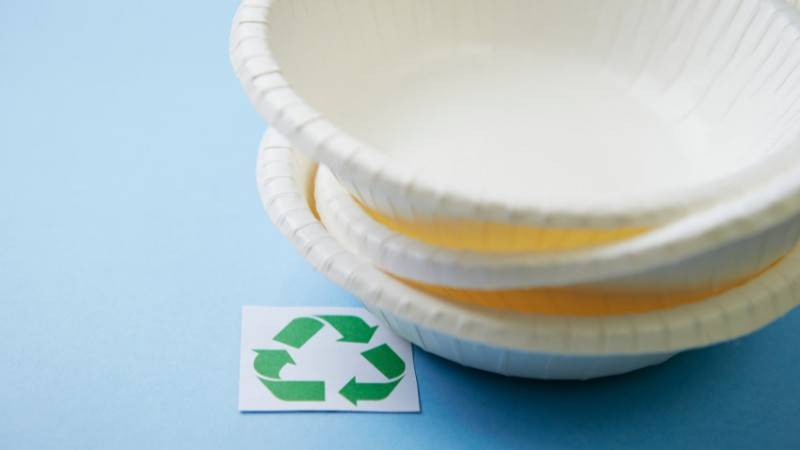
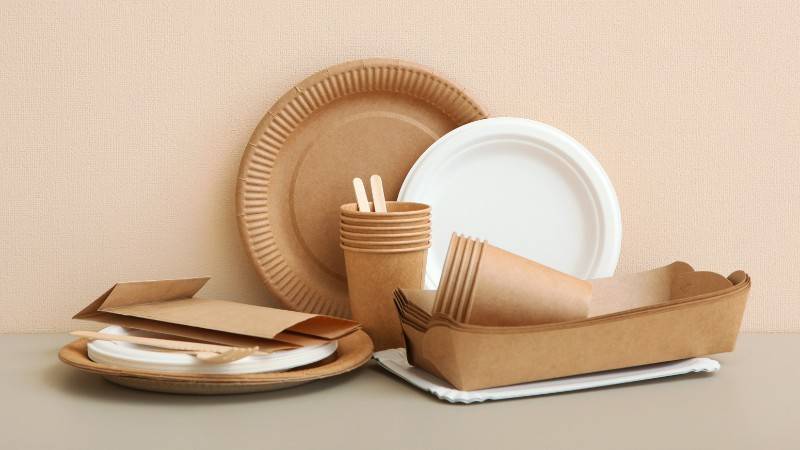
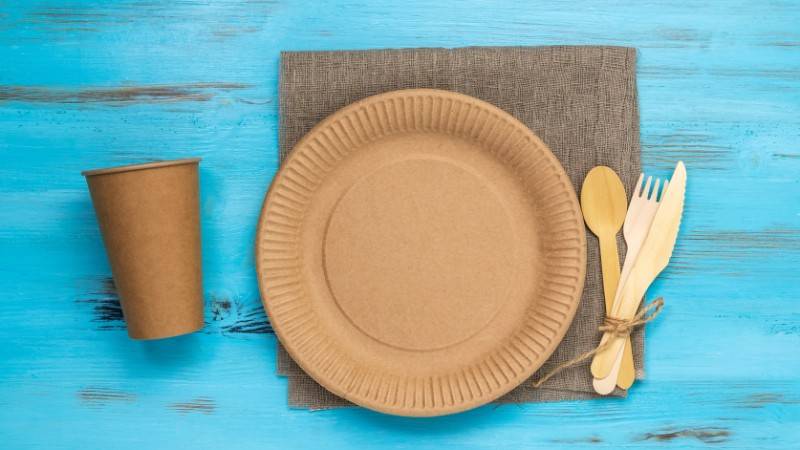



I want to do business